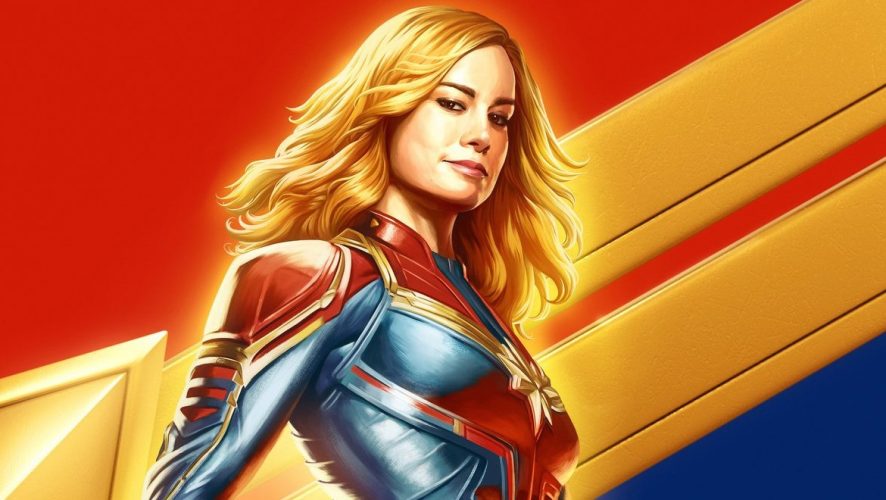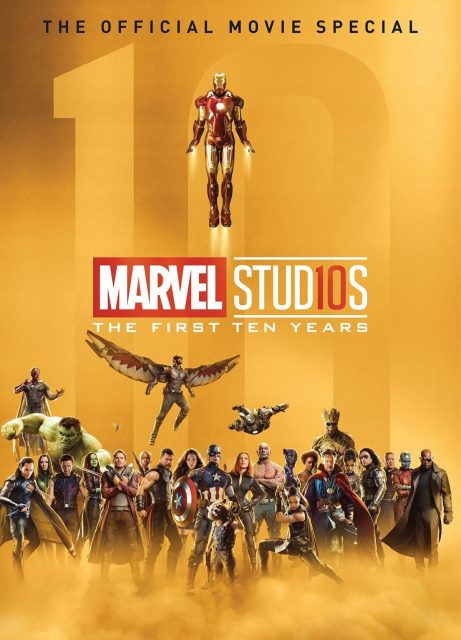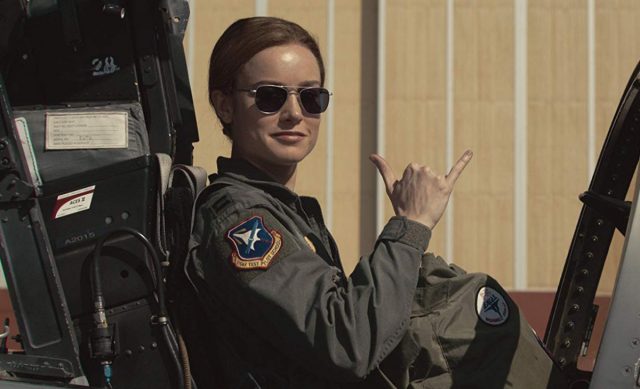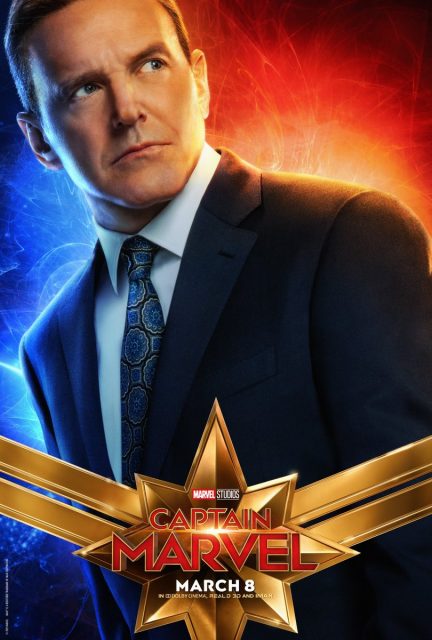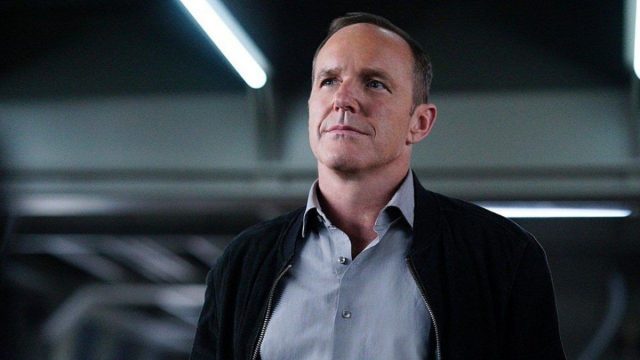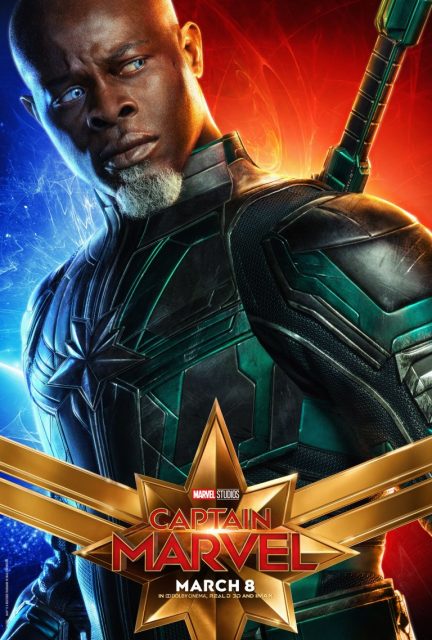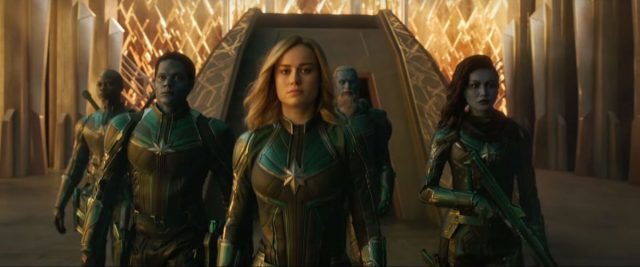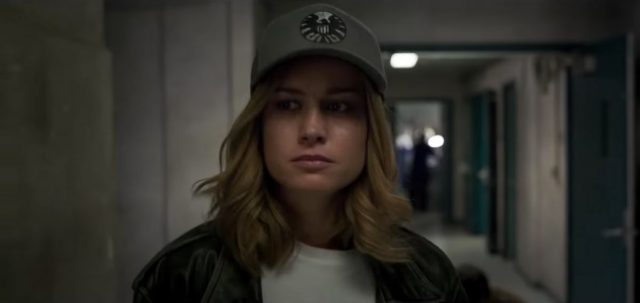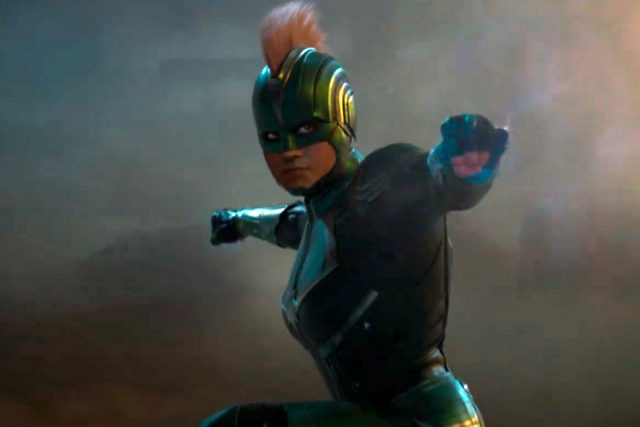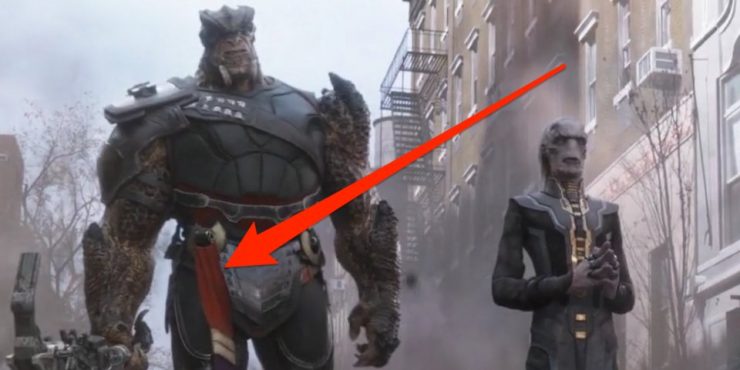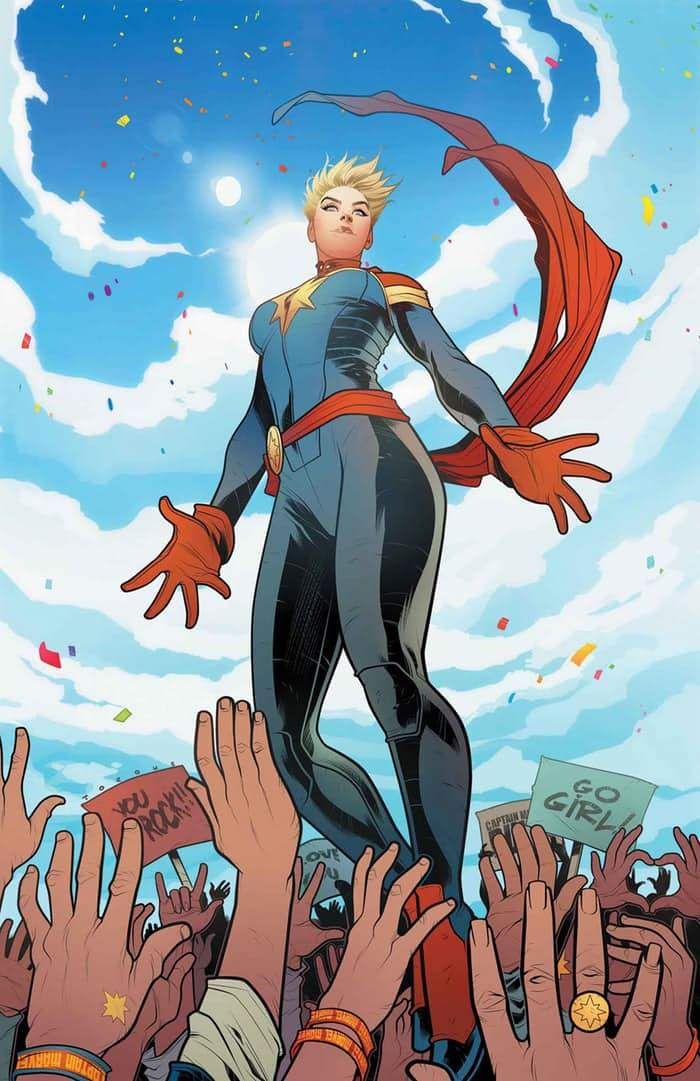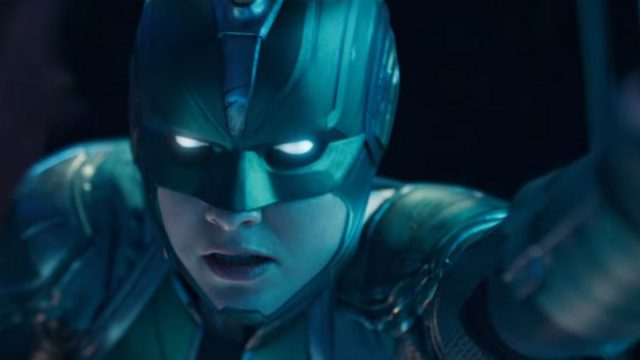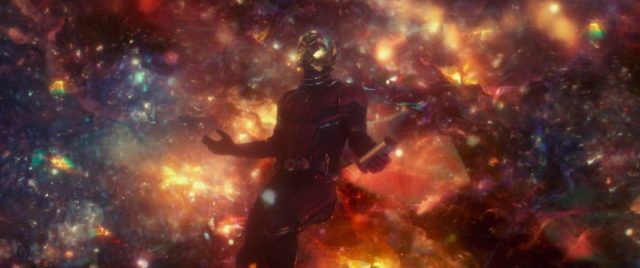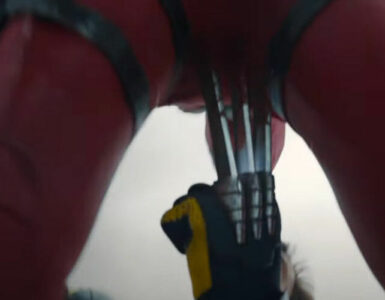The most powerful Avenger. Wait, isn’t that Thor?
Before the Avengers, there was… Wait. Captain America is from World War II right?
The most powerful hero in the Marvel Cinematic Universe?
Plenty has been said and assumed about Captain Marvel, the newest… okay, there is plenty to know and understand about Marvel Studios’ Captain Marvel.
Everyone’s anxious to know more about the titular spacefaring superhero played by the affable Brie Larson, and after the tragedy that was Avengers: Infinity War, everyone’s hyped to see how powerful Captain Marvel is, and what exactly makes her so special to be anointed as the “Marvel Cinematic Universe’s most powerful hero”, even more so than the likes of Thor or The Hulk.
What we do know is that she’s expected to play a large role in the next MCU flick, and most of all, everyone’s curious to find out what exactly she can do that will rescue the half of the MCU from oblivion come April, when Avengers: Endgame premieres.
But before the curtain lifts on those questions when the movie hits on March 7, let’s take a look at what we know about all that we’ve seen (a good mix of hard facts and loose theories) in Captain Marvel, and how each notable element fits in the timeline of the greater Marvel Cinematic Universe.
***MINOR SPOILERS FOR ALL MENTIONED MARVEL STUDIOS MOVIES IF YOU HAVEN’T WATCHED, SO READ AT YOUR OWN RISK. DON’T SAY WE DIDN’T WARN YOU***
The Timeline
If one were to place Captain Marvel against the larger tapestry of the MCU timeline, Marvel Studios themselves got you covered.
In the 2018 hardcover sourcebook Marvel Studios: The First Ten Years, a proper (but ultimately a little contentious and incomplete) timeline of the current MCU as we know it was arranged according to the events that happened in the movies (don’t confuse yourself with the movie release schedule!) or your ease of reference.
Here’s the timeline of events:
- 1943-1945: Captain America: The First Avenger
- 2010: Iron Man
- 2011: Iron Man 2, The Incredible Hulk, Thor
- 2012: The Avengers, Iron Man 3
- 2013: Thor: The Dark World
- 2014: Captain America: The Winter Soldier, Guardians of the Galaxy, Guardians of the Galaxy Vol. 2
- 2015: Avengers: Age of Ultron, Ant-Man
- 2016: Captain America: Civil War, Spider-Man: Homecoming
- 2016 through to 2017: Doctor Strange
- 2017: Black Panther, Thor: Ragnarok, Avengers: Infinity War
It’s quite obvious that 2018’s Ant-Man and the Wasp is the only released Marvel Studios movie not included here, so it’s safe to assume that this publication was written long before the movie was released in July, despite being published on November 20 in the same year.
But since we already know what transpired in that movie, putting it somewhere before or after Infinity War (because of what we saw in the post-credits scenes) isn’t a bad choice. And don’t get us started on Spider-Man: Homecoming and the mistake it made at the start with the timeline.
Captain Marvel, then, would come after Captain America and before Iron Man, having been set in the 1990s. After making the necessary adjustments, here’s what the larger MCU timeline looks like:
- 1943-1945: Captain America: The First Avenger
- 1990s: Captain Marvel
- 2010: Iron Man
- 2011: Iron Man 2, The Incredible Hulk, Thor
- 2012: The Avengers, Iron Man 3
- 2013: Thor: The Dark World
- 2014: Captain America: The Winter Soldier, Guardians of the Galaxy, Guardians of the Galaxy Vol. 2
- 2015: Avengers: Age of Ultron, Ant-Man
- 2016: Captain America: Civil War, Spider-Man: Homecoming
- 2016 through to 2017: Doctor Strange
- 2017: Black Panther, Thor: Ragnarok, Ant-Man and the Wasp, Avengers: Infinity War, Ant-Man and the Wasp (post-credits scenes)
Okay, so you’ve read the easy bit. But why stop there when we’ve got the nitty gritty of Captain Marvel to pick at as well?
The 1990s
First and foremost, we all know that Captain Marvel is essentially a period film. Specifically, in the 1990s, a time when mobile phones were water-bottle-sized blocks of metal and plastic, when Justin Bieber was still a Baby, and when comic books underwent an “Attitude Era” of sorts, sporting unrealistically muscled male superheroes and even more radically sexualised female ones, all shouldering triple-barreled bazookas triple their size.
It was also the time when The Avengers and its members didn’t exist yet. (Sans Captain America, but that technically doesn’t count since he was encased in a block of ice, and The Avengers Initiative were officially christened in 2010). In the 1990s, the only real recognisable superpower was the USA, fresh from the end of the heated (heh) Cold War with the USSR.
So what, then, of the likes of Captain Marvel, the Kree, and the Skrull? Probably some X-Files mumbo-jumbo. On a more serious note, though, the world’s general lack of exposure to superheroes and extraterrestrial threats at the time means that if one were to see a powered being shooting photon blasts, let alone an army of shape-shifting Skrulls, it would obviously cause a stir among the folk in the vicinity, and across the globe on a larger perspective.
Of course, that stir didn’t happen, or we wouldn’t be getting those epic first-time reactions the public got when the Avengers proper fended off against Loki’s invading Chitauri fleet. So Captain Marvel appeared in the 1990s, but the world doesn’t know she exists?
That could mean one of two things: the events of Captain Marvel were contained to a relatively remote part of Earth (highly unlikely considering how big the Skrull Invasion in the comics was, and is shaping up to be from what we’ve seen in the trailers), or that the memories of those who existed in the ‘90s were wiped a là Men In Black memory erasers.
Let’s assume it’s the former. Who else could do the deed better, than SHIELD?
S.H.I.E.L.D
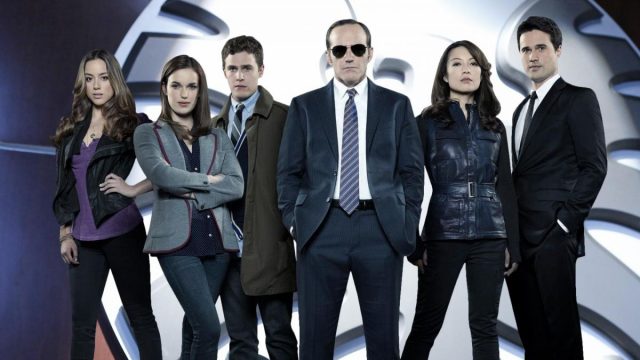
Who are these Ray Bans-wearing (or in Nick Fury’s case, eyepatch-wearing), wisecracking know-it-alls in suits again, you ask? Time for a memory jog. S.H.I.E.L.D, short for Strategic Homeland Intervention, Enforcement and Logistics Division, is a US-based governmental military intelligence agency that specialises in maintaining security on a national and global level.
They mainly deal with issues and threats conventional warfare isn’t equipped to deal with, such as the aforementioned Chitauri invasion (well, maybe a little too much for them, hence the Avengers Initiative), and the Skrull invasion we’ve yet to see in Captain Marvel. They’ve been around for quite some time now, first conceived not long after World War II by Howard Stark (Iron Man/Tony Stark’s father), towards the end of Captain America: The First Avenger.
In relation to dealing with Carol Danvers, and the Kree and Skrull aliens, this may be SHIELD’s first major assignment nearly fifty years after its inception. We’ve already seen Danvers have a run-in with Agents Nick Fury and Phil Coulson in the trailers, so we’ll definitely see more of that, plus some combat against the aforementioned Skrull invaders (and possibly Kree, because we humans on Earth can never be too sure which extraterrestrial to trust, can we?)
Nick Fury
Of course, if you talk about SHIELD, you can’t not talk about Nick Fury. The stern and sarcastic figurehead of SHIELD we’ve seen all the way from the first Iron Man was not really quite the person he is in the events of Captain Marvel.
He’s a little more easy-going and physically fit, a little less jaded and serious, and twice the amount of eyes than what we’re currently used to. Of course, that just means we’ll see something in him change during the course of the movie. (psst, actor Samuel L. Jackson did mention that he will be getting an exclusive fight scene in the movie!)
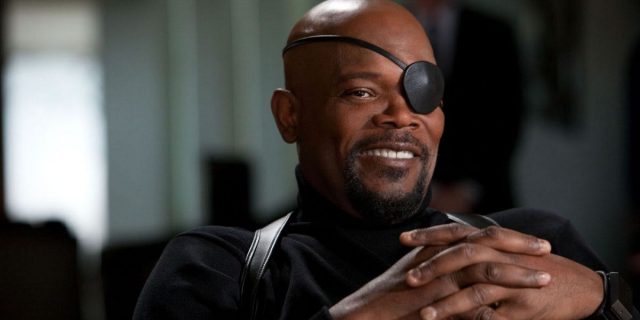
Phil Coulson
If you’ve been following the Marvel Studios movies for the past 10 years, then you’d more or less be delighted to see Agent Phil Coulson make a return to the silver screen – this time in his prime.
So who is he, exactly? Well, for starters, Phil Coulson is one of the higher-ranking Agents of SHIELD, second only to Nick Fury. He appeared in Iron Man, its sequel but at the end of The Avengers, Coulson was *SPOILERS* killed by Loki while attempting to fend him off at the SHIELD flying fortress called the Helicarrier.
By Nick Fury’s orders and SHIELD’s nigh-inexhaustible funding, Coulson was brought back to life by means of advanced medical technology that transplanted some body parts of a Kree corpse (yes, we’ll get to the Kree race in a bit) onto him, which kickstarted his adventures in Marvel’s Agents of S.H.I.E.L.D TV spin-off series.
But we digress. Similar to Fury in the events of Captain Marvel, Coulson will also be about twenty years younger, meaning a potential fight scene for Clark Gregg’s resident formal, earnest, suit-wearing badass. Or maybe even more of his Captain America baseball card collection. One can only hope, right?
The Kree Empire
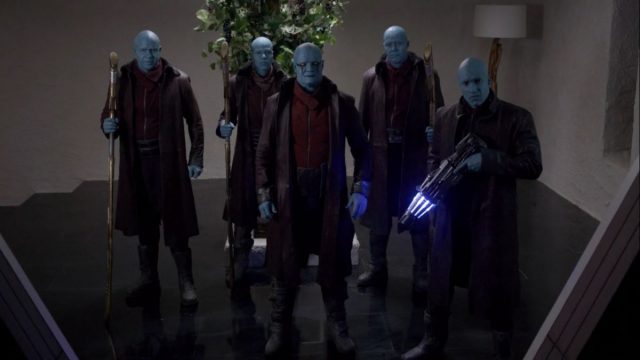
On to the Kree. They are a race of typically blue-skinned humanoids (but can also make their skin resembles that of regular humans’) who possess superior physical strength and reflexes, an enhanced healing factor that grants them lifespans of up to thousands of years, as well as collectively possessing advanced technology that allows them to travel across multiple dimensions of space without much effort.
Their home planet is on Hala, which we’ve seen a little bit of in Guardians of the Galaxy Vol. 2, which Star-Lord’s (not very nice) father Ego (played by Kurt Russell and very briefly by David Hasselhoff, but, again, we digress) nearly obliterated towards the end of that film.
Prior to Captain Marvel, the Kree have actually featured more heavily in Agents of S.H.I.E.L.D, but notable members of the Kree Empire who have made their stamp on previous Marvel Studios titles, and will be seen in action in some form or other in Captain Marvel.
Ronan the Accuser
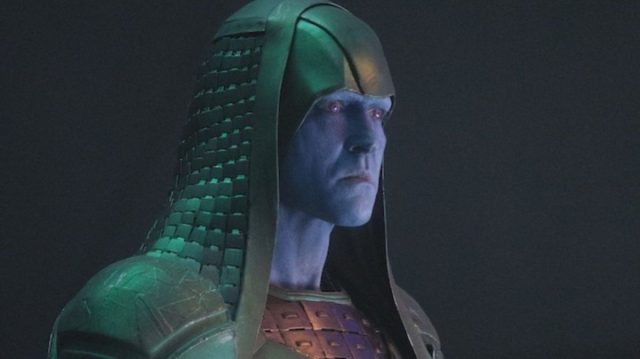
The primary antagonist of the first Guardians of the Galaxy, Ronan the Accuser (Lee Pace) was a loyal servant to Thanos in his quest to obtain all six Infinity Stones. During GotG, Ronan sought the Power Stone, only to be bested by the Guardians of the Galaxy, especially after being momentarily distracted by Star Lord’s (Chris Pratt) challenge to a dance-off. He makes a return as his proud and haughty self in Captain Marvel, most likely under the Kree banner, before defecting over to Thanos’ side.
Korath the Pursuer
Ah, you might’ve seen this dude in the Captain Marvel trailers. Korath the Pursuer (played by Djimon Hounsou) was, like Ronan, a proud member of the Kree Empire through and through, but eventually defected to Thanos’ cause as well. A dutiful and honourable individual, Korath was loyal to whomever he served, be it Ronan, Thanos, or his special ops colleagues during his stint in the Starforce (which we’ll get to in a bit). For his transgressions on the Battle of Xandar in Guardians of the Galaxy, he, like Ronan, was KIA, this time by Dave Bautista’s Drax the Destroyer.
Starforce
The Starforce is an elite military task force comprised of some of the most skilled and battle-hardened Kree warriors of the Kree military. Their captain is *SPOILERS* Yon-Rogg (played by Jude Law), and with him are Carol Danvers, the aforementioned Korath, Minn-Erva (portrayed by Gemma Chan), as well as Att-Lass and Bron-Char.
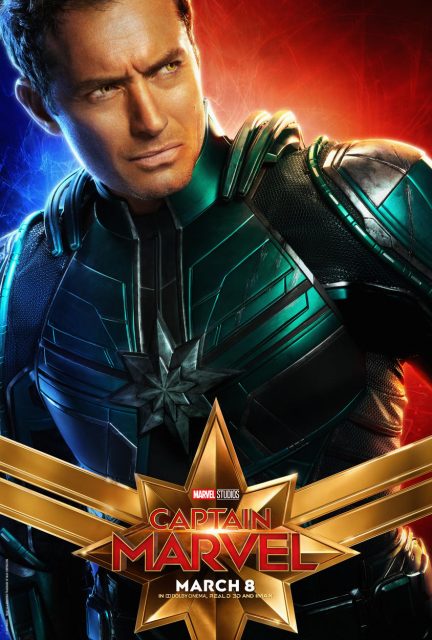
In the comics, the Starforce are actually a supervillain team who opposed the Avengers who visited Hala during the Kree-Shi’ar War storyline (that’s one of the wars the Kree are fighting, but not quite the one we’re seeing in this movie. More on that later) in 1992. Their cause was noble – to protect their homeworld Hala from extraterrestrial invaders (in this case, the Avengers) and other warring races or factions.
Skrulls
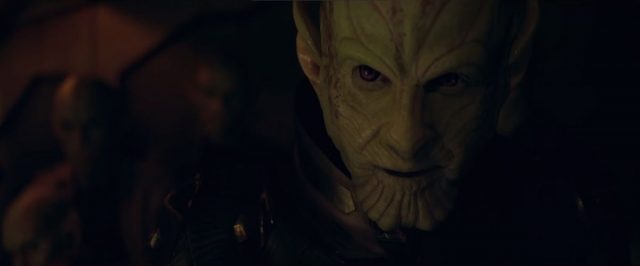
The Skrulls are perhaps the most intriguing new addition to the Marvel Cinematic Universe. These iconic aliens are a shapeshifting race, who also possess advanced technological prowess like the Kree. Obviously what sets them apart is their ability to mimic and transform into literally anyone they can see, which in and of itself is the single most dangerous weapon they have in their arsenal.
Now, imagine going to war with these guys who can transform into your own comrades, mimicking their behaviours and even voices. Scary, huh? Well, that’s exactly what happened in the comics in a 2008 storyline called Secret Invasion, where the Skrulls implanted themselves within and among the superhero community on Earth, secretly replacing its many members with impostors over several years, and attempting to rip apart Earth from within using their disguises.

In Captain Marvel, we see bits of that in the trailers, with Carol Danvers punching random old ladies smiling at her creepily on the subway, revealing their true nature. It seems the Kree are well-equipped to combat the Skrulls, although their deceptive nature may prove otherwise.
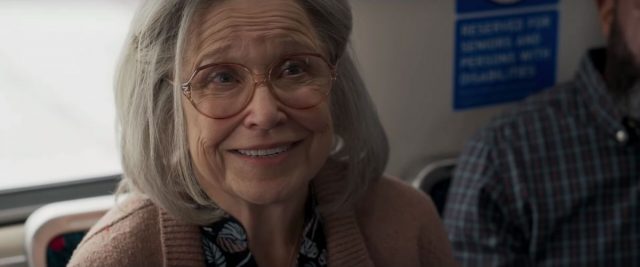
It is not entirely known whether the Skrulls are still around after the events of Captain Marvel, since we never even get mentions of them in the present-day MCU timeline, but let’s not be quick to write them off even if they get defeated in Captain Marvel, because they might still be lurking among Earthlings, biding their time…
Captain Marvel – Where Is She Now?
So, at the end-credits scenes of Avengers: Infinity War, we saw Nick Fury whip out his old-school pager to send a distress signal to Captain Marvel. We know that, in some capacity, Carol Danvers is out there biding her time or tending to business of some sort. We’re not exactly sure where she is, but a lot of fan theories have suggested that she may simply be in outer space figuring out her powers.
This source comes from a 4Chan post (via Reddit) that surfaced a little over a month ago that detailed potential spoilers to come out of Captain Marvel. We’re gonna leave it here for you to read, so open Pandora’s Box only at your own risk. Whether you’ve clicked the link or not, you may continue on down.
Basically, the potential spoilers cite that Carol Danvers’ powers may be connected to the Quantum Realm, which will serve as a key ingredient to rescuing the eradicated half of the Marvel Cinematic Universe, but in order to master that power, she naturally needed time and space (pun intended) in order to learn how to do so, without harming anyone. So, she might’ve been called up by Nick Fury as early as when Loki invaded in Avengers, but we all know how that went down.
It is probably during the events of Endgame when Danvers has reached a state of understanding at least, or mastery at best, of harnessing her connection to the Quantum Realm, giving her time-travel powers and reversing the effects of Thanos’ finger snap as a result.
That’s the most logically sound theory around so far. Although, others have interestingly pointed out that the sash on Black Order member Cull Obsidian/Black Dwarf (y’know, the guy Bruce Banner killed in Infinity War) bore the red/gold/blue colours of Carol Danvers, possibly as a trophy for defeating her in single combat.
Since then, that theory has been debunked, revealing that the sash may just be a generic Kree colour. A logical theory, but ultimately a looser one than the Quantum Realm.
The Quantum Realm
We’ve been throwing this term around many times over in the last few paragraphs. Yes, this is the same one that Ant-Man/Scott Lang (Paul Rudd) is currently trapped in after the events of Ant-Man and the Wasp. With all things related to the vision of producer Kevin Feige, everything in the MCU happens for a calculated reason.
As we know, the Quantum Realm is a plane of existence that breaks the laws of space and time. It can only be accessed when one shrinks past the sub-atomic level. In this state, continued exposure to and extensive usage of the Quantum Realm, as first conceived in Ant-Man may sometimes grant one abilities, as shown in the likes of Janet Van Dyne (Michelle Pfeiffer) and Ghost/Ava Starr (Hannah John-Kamen).
In the Marvel Studios: The First Ten Years sourcebook, an interview with Feige all but confirmed their extensive usage of the Quantum Realm from when it was first coneived in Ant-Man. Here are his exact words from the book:
At the end of Ant-Man we followed Scott Lang into the Quantum Realm for the first time. We were beginning to peel back the onion that would later be completely peeled back in Doctor Strange as we go into the multiverse. So that was our little test into that. But now the Quantum Realm is a whole other territory that we can play with to tell our stories. This Quantum Realm is much larger than we ever imagined, and there are all sorts of adventures to be had at that level, which perhaps we will explore in another film.
It seems the Kree also have access to this volatile and mysterious energy. From what we can glean in the trailers, Carol Danvers seems to have stumbled upon some form of Kree tech, the kind which may contain some form of the Quantum Realm, which reached a volatile state at the time she was nearby, granting her superpowers but leaving her in a critical condition and also amnesiac (as we see constantly in the multiple trailers).
This may be the reason for her ability to tap into the Quantum Realm and giving her photon blasts as a result. But the photon blasts are a mere fraction of what she can do. If time-travel is actually a thing, she, with the help of the trapped Ant-Man, may be the key to reversing the timeline that Thanos brought about currently.
Of course, these bottom parts of the article are mere speculation at this point, but we hope it’s enough for you to get those brain juices flowing and coming into the premiere of Captain Marvel on March 7 with a little bit more excitement.
For all we know, some of them may actually end up true, so there’s definitely no harm in trying.
Marion has a serious RPG addiction. Sometimes it bleeds into real life; he forgets to sleep because he thinks he has a Witcher’s body clock. Forgive him in advance if he suddenly blurts out terms such as “Mind Flayer” and “Magic Missile”, because never once does he stop thinking about his next Dungeons & Dragons game.

